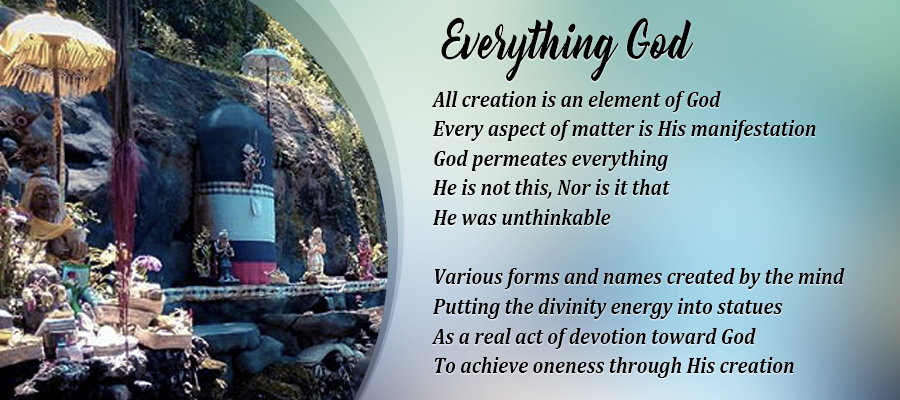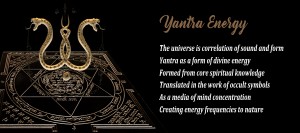- 1Acknowledging the omniscience and omnipresence of God
- 2The statues help the devotee become deeply religious
- 3As objects of concentration and meditation
- 4In worship, the true worshipper becomes unite of God
- 5The statue and Symbol help us cultivate sameness and equanimity
- 6A powerful technique to cultivate purity and relate to the deity
- 7A declaration of simple faith in the universal presence of God
- 8A Transformative and purifying practice
- 9The hidden aspect of Statue worship
- 10For balance and tolerance
Acknowledging the omniscience and omnipresence of God
God is omnipresent, then everything in the universe, including the statues one worships, is filled with His energy and presence.
Everything in the universe is equally sacred and worthy of worship since God equally pervades all and is present in all. When we look at the picture of a person, we almost feel as if we are looking at the person, not his or her image, although we know what we are looking at. If the image belongs to a great leader, spiritual person or saint, we treat it with even more respect as if we are meeting the real person.
If someone mutilates your picture or that of a person whom you like or love, you may feel greatly offended by it and show your anger. In all these cases, the images are coming to life in your thoughts or your imagination. In statue worship also the same happens. The statues become living and breathing realities in the imagination of their devotees, who will feel the same emotional pain or reaction if anyone shows them disrespect or contempt.
The statues help the devotee become deeply religious
A devout Hindu worships his favorite deities in the temples or at home to fill his mind with their thoughts and keeps himself in a certain, reverential and devotional state as he engages himself in worldly activities and obligatory duties. The practice reinforces his faith and his confidence to face the problems and difficulties in life. When the symbol of the gods is installed in the house or in a place of worship in a house, the very house becomes an abode of gods, a sacred place or a temple by itself. By their very presence in the house, the statues remind the devout members of the household of their divine presence amidst them and the need to live religiously and ethically to keep the house clean and sacred and free from evil influences.
As objects of concentration and meditation
More than any abstract concept, an image or a symbol (yantra) serves as the best aid in practicing concentration and meditation.
By keeping the mind concentrated on a particular image (Yantra), one can bring it under control and stabilize it in the thoughts of the deity. Recent research confirms the beneficent effects of meditation, and how the mind can be effectively used to heal the body or change one’s way of thinking and attitude.
There is some growing evidence that thoughts can manifest reality. It is now a widely accepted fact that guided meditation and visualization techniques can help people to overcome their hidden fears, control their emotions, change their responses, or learn new behavior. The ancient seers of Hindu were aware of the benefits of concentration and meditation. Hence, they encouraged internal and external rituals and domestic worship. They knew that concentration and meditation upon the forms of God, and objects of Nature helped people control their fickle minds and become stabilized in the thoughts of God.
In worship, the true worshipper becomes unite of God
A statue form or Arca of God symbolically represents the whole process of creation
According to the scriptures, worlds and beings came into existence when Purusha (Divine Will and consciousness) enters Prakriti (Nature, Energy or Matter) and becomes established in it. Their association or union results in the formation of diversity.
The world is a projection of God in the field of Nature. The forms and ideas are already present in the consciousness of the Cosmic Being (Isvara or Purusha). He brings them to life by pouring into them His creative energy. Before creation, the material universe (Viraj) exists as an idea in the cosmic consciousness of Isvara. When the creation begins, he breathes life into it with his creative energy and brings it to life.
Our world is Jagat, the one which is awakened and illumined by the light of God or that which shines with the brilliance of the Sun. When an idol is worshipped with intense love and devotion, almost a similar process takes place in the mind of the worshipper. The idol is no doubt inert and inactive. At the physical level, it is just a piece of stone, clay, wood or some other material. However, in the mind of the devotee, it comes to life as he pours his love and devotion into it and makes offerings to it. It happens repeatedly whenever a devotee worships it. Hence, it is believed that not all statues are alike.
Those who are more frequently worshipped by more people accumulate higher power in proportion to the offerings they receive. Thus in worship, devotees step into the role of God. They put life into the materiality of the statue and make them alive.
The statue and Symbol help us cultivate sameness and equanimity
Like our gross bodies, the statues are also impermanent and destructible. Indeed, some statues are immersed in water or discarded after they are worshipped. Worshipping the destructible forms of God reminds us of our own impermanence, the impermanence of the world and the need to work for our liberation.
By worshipping them one overcomes attachment to superficial beauty and learns to see the truth which is hidden in the things, beyond their names and forms.
Through statue also teach us to treat the whole creation with respect and recognize the presence of God in all objects. Hence, Hindus not only worship statues in temples but also natural objects and phenomena such as the rivers, sacred trees, mountains, natural symbols, the sky, the earth, the oceans, the stars, the sun and the moon and other planetary bodies.





